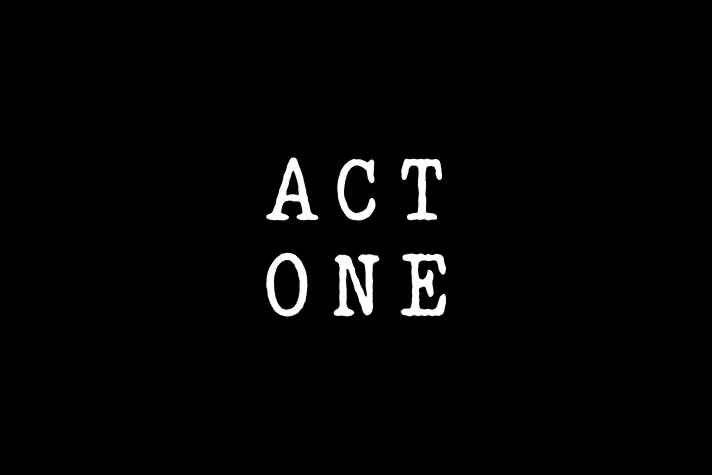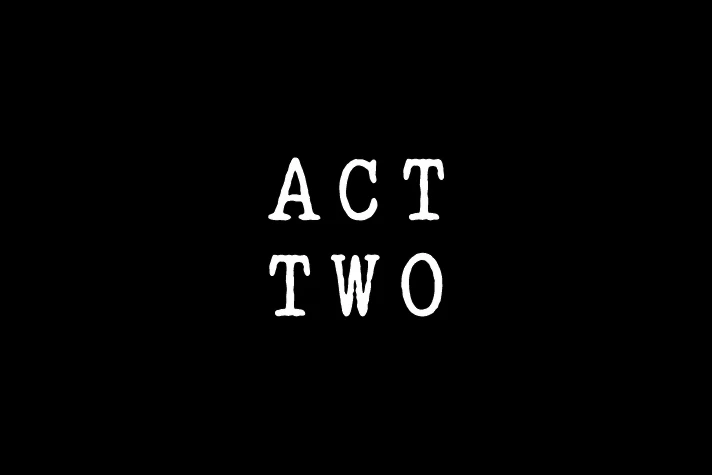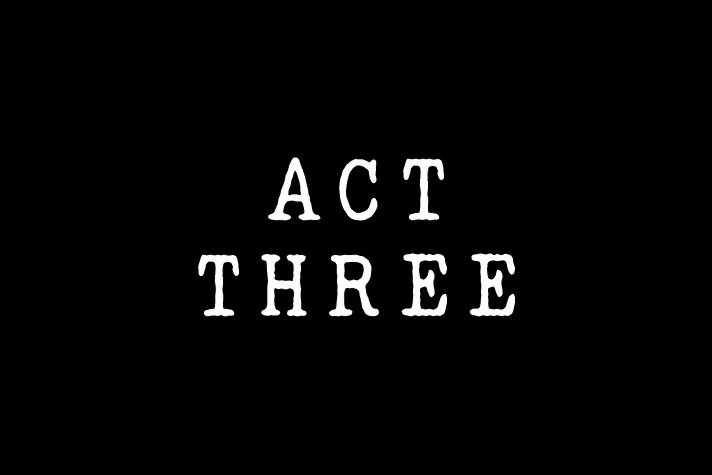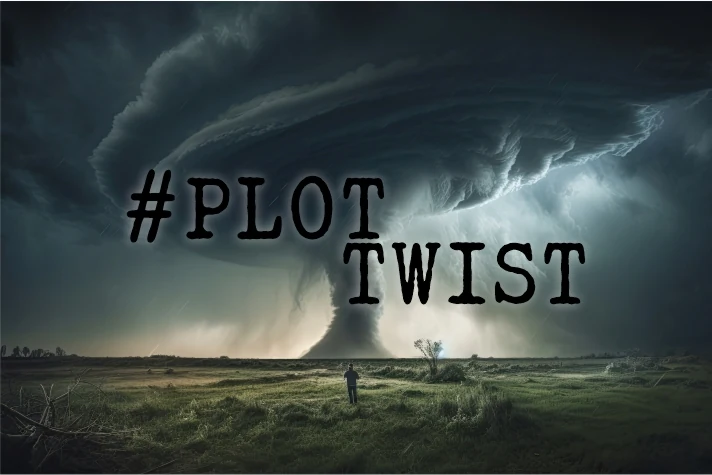We all know that every good story should have a beginning, middle, and end or an introduction, elaboration, and conclusion. This structure is fundamental for novels to capture readers’ attention and encourage them to read more of your work—every writer’s dream. Let’s explore the concept of a three-act structure and how we can develop a story through three acts to help make that dream a reality. Simply examine the books you read, and you’ll find numerous examples of the three-act structure. The three-act structure is a narrative structure that can be easily used in any genre. It is the most familiar structure among writers because the stories follow all the key elements of the three-act structure: the beginning of the story, with the first plot point through the central conflict until the last battle. It is an essential takeaway for new writers, helping them with pacing issues, plot, and character development.
What Are the Elements of Three Act Structure?

The three-act structure is the most common model writers of fiction use to create a story in a novel. It consists of three parts that we call Acts:
Act 1: Setup
Act 2: Confrontation
Act 3: Resolution.
It may sound simple, but it is not, as each consists of three parts. It becomes easier once you break down the story structure into smaller components and understand what they are.
How To Use Three-Act Structure in Writing: Breakdown

Act 1 Setup
Exposition
At the very beginning, introduce your protagonist or main character. The reader should see your protagonist and their life. This is an ideal opportunity to provide insight into the character’s “normal” day and settings. While offering a bit of background is essential, be cautious of crossing the thin line between providing just enough information and info-dumping. Therefore, if you need to introduce a less relevant character, minimize the paragraph about them to the essential information.
Inciting Incident
This central plot point catapults your novel’s action and turns your main character’s world upside down. Inciting incidents should come at the book’s early stages because this is the main reason for your reader to keep turning the pages. This is where the main conflict begins where your main protagonist gets out of the comfort zone, and you ask the dramatic question. That question is the main conflict summary, or that is the question that summirize your protagonist struggle.
Plot Point 1
First major plot point happens when your main character is cornered, and nothing can remain the same. An action is necessary, and your main character takes it, as there is no longer a normal, everyday life. This is where the reader finds out another plot point, the story’s central conflict, and where you begin to introduce secondary characters and fit them into the story. During the first plot point your protagonist will find out what is it that the antagonist wants. First act should serve as a place to setup everything you need to hook a reader.
Act 1 Examples
In Rile Sager’s “Home Before Dark”, his main character, Maggie, lived briefly as a child in a mansion they ran away from because it was supposedly haunted. Her father wrote a famous book about Barneberry Hall, so everyone knows about their trauma. Maggie never fully believed the story, and now she returns to the house to renovate it. However, her return is marked by many strange occurrences inside the house. This is a very effective way to catapult the story because once the inciting incident happens, once she inherits the house and decides to go back, the story is kicked into motion, and Maggie is going full speed ahead.

Act 2 Confrontation or Build
The second act is where we dig deep into the story as the protagonist strives to reach his goal, encountering many obstacles and constant challenges that he must overcome. It has its own narrative structure that consists of three parts, but the story beats very fast.
Rising Action
Obstacles are lined up, significant event happens and the central conflict is getting complicated. The direction in which the entire conflict will conclude is gradually becoming clear. This is the ideal opportunity where we build a character arc that will reveal their true potential through the challenges you present to them. The entire journey is also pictured as the internal development of the main character.
Midpoint
We are halfway down the road, and the story has a big twist, another plot point. This unexpected twist forces our protagonist to make a complex, maybe impossible decision or take a new direction. This twist alters the course of the plot and triggers significant internal changes in the protagonist, making them grow.
Second plot point or Turning Point Into Act Three
Most stories reach a significant escalation here. You can also confront your protagonist directly with the antagonist. It is another plot point of no return that will significantly impact your character arc, making it impossible to return to normal life. This is a major plot point, and by now, we know everything about the themes and motives of the story, and our protagonist is forced to reflect on everything once again. We have all the essential elements to see where the story is heading, and we can assume the final battle.

Act 3 Resolution
Here, the plot reaches its climax, the final conflict occurs, and everything is resolved. In Act 3, all the elements finally come together to form a whole picture, providing readers with satisfaction and answers to the questions that have kept them in suspense throughout the story.
Pre-climax
The last act structure is all about bringing the story to its conclusion, but before that, we must build tension by revealing an important secret and raising the stakes even further. This is a perfect place to make sense of all the subplots and cleverly foreshadow what is to come in the climax.
Climax
This part of the act begins with the most crucial scene: the direct and final conflict between the protagonist and the antagonist. Other characters can be present, but you need your main characters to resolve the central conflict of your story. Every good story also needs a last-minute plot twist or an unexpected revelation. The final act should evoke an emotional rollercoaster and provide catharsis for the readers, as this is the moment where they should fully experience the intensity of all the built-up tension and emotions.

Denouement
Finally, the tension is released, and all the loose ends are neatly tied up. There are no broken promises; you have fulfilled everything, and the conclusion is satisfying. We are aware of everything that happens to the main character and have insight into their personal growth; the same holds for all the subplots and side characters. The protagonist’s goal is fulfilled, and there is no single scene that we don’t understand now.
FaQ
Q: Is it possible to make a story without following this structure?
Of course, it is possible. This structure can help when someone is unsure about story structures and how the plot points fit together. Over time, as you get into a routine, some things fall into place on their own, and sometimes the story develops in a way that doesn’t strictly follow the rules of this structure. Sometimes, the climax will have more elements, an unexpected twist will appear in between, other times the main protagonist will reveal a closely guarded secret, etc. Each of these additional elements is here because they are either necessary or add to the suspense and build that climax. Don’t hesitate if you see your story straying from the three-act form. The three-act story structure shouldn’t limit you but rather serve as a map for how far you need to go. Everything else along the way is up to you to define in your own way.
Q: Can I use the three-act story structure for other forms of storytelling besides fiction?
Scriptwriters favor this narrative model and apply it to both film and documentary works. This universal framework has been used since the time of Aristotle. Aristotle’s Poetics is the first work that addresses the three-act story structure. Most tragedies and comedies follow this structure, ensuring a clear distinction between the introduction, middle, and conclusion.
Q: Which act is typically the longest in a three-act story structure?
The second act is usually the longest. Act one introduces the main character and does not overwhelm the reader with backstory at the beginning. As the plot progresses, for the whole story to make sense, it is necessary to introduce other characters and add plot elements so that the reader remains engaged and reads further. Act two serves to build an entire world around your protagonist. The structure of the second act is the most complicated, and you will write about your protagonist, other subplots, and the stories of those characters around your protagonist. Act two is the place for the midplot and plot point two digging deep into the story.
Q: How long should act 3 be in a novel?
Act three is the shortest, taking up only a quarter of the entire novel, and sometimes even less.





